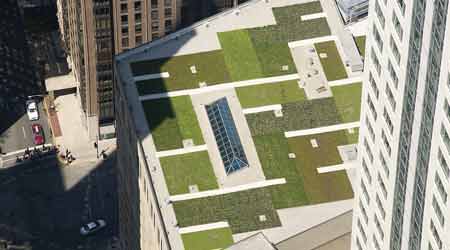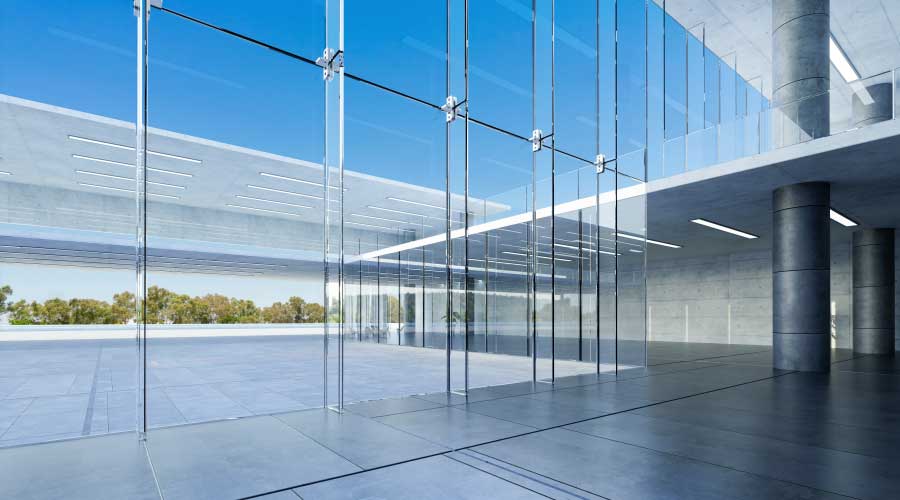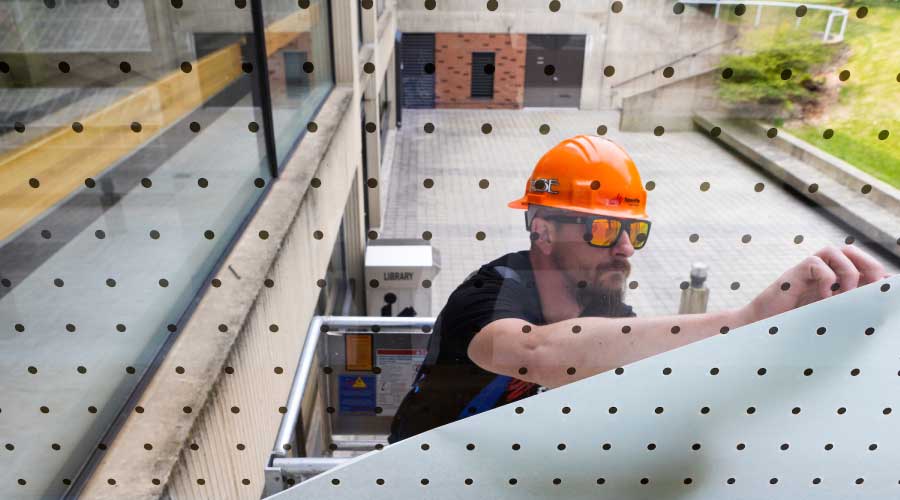 Vegetative roofs have gained widespread acceptance in commercial and institutional facilities. Among the benefits: By absorbing rainwater, a vegetative roof controls the rate of run-off, reducing the surge on the stormwater system.
Vegetative roofs have gained widespread acceptance in commercial and institutional facilities. Among the benefits: By absorbing rainwater, a vegetative roof controls the rate of run-off, reducing the surge on the stormwater system.3 Ways to Boost Building Envelope Performance
High-performance exteriors strategies like low-e glazings, vegetative roofs, and electrochromic glazing can significantly reduce energy use.
Advances in building technology, construction techniques, and operating strategies are helping building owners to achieve efficiencies in energy and water use that were out of reach even in the recent past. Some of these advances are entirely new, while others are improvements on existing technologies. The benefit of these advances does not stop with improved operating efficiencies. Owners are finding that their use is resulting in improved occupant comfort and productivity.
These advances — which form the foundation for today’s high-performance buildings — touch almost every element in building operations, including the building envelope. High-performance building envelopes, like their conventional design counterparts, protect the building and its occupants from the elements. But they can do more. They can respond to changes in interior and exterior conditions. They can provide levels of fresh air to building occupants based on occupancy levels. They can harvest solar energy. They can harvest and put to use rainwater. And they can perform all of these activities through a combination of active and passive strategies.
Building envelopes have long been recognized for their role in protecting the building and its contents from the elements and for how they affect total building energy use. To be successful, the building envelope must achieve a balance among four factors:
• controlling the difference between the indoor and outdoor environments,
• meeting the needs of the occupants,
• protecting the building contents, and
• keeping operating costs as low as possible.
High-performance building strategies will allow building owners to improve occupant comfort while minimizing energy and water use.
1. Low-e glazing
One established technique to achieve this level of balance is the use of low-emissivity, or low-e, glazings. Low-e glazings have been in use since the 1970s. But a desire to improve building energy efficiency along with more advanced coatings has increased the use of these glazings in both the new construction and the retrofit markets.
Low-e glazings use a thin, nearly transparent coating to improve energy efficiency of buildings in several ways. The coating limits the amount of ultraviolet and infrared light while allowing visible light to pass through. During the cooling season, the coating reduces the heating load on the building’s air conditioning system. During the heating season, the reverse is true. The coating reflects the long-wave infrared radiation from inside the building back inside, reducing heat losses. Buildings that are equipped with the low-e glazings are estimated on average to reduce annual energy use by five to 15 percent over buildings with conventional glazings.
Early generations of low-e coatings were effective in reducing building cooling loads by blocking infrared radiation from the sun. But those glazings also blocked that same radiation during the heating season and could unintentionally increase heating loads. Today’s generation of coatings has been more finely tuned to allow some of the sun’s shortwave infrared radiation to pass through, making them better suited for use in colder climates.
2. Vegetative roofs
Vegetative roofs are one element of a high-performance building envelope that have gained widespread acceptance. A vegetative roof may be partially or fully covered with vegetation. The vegetation is planted in a growing medium installed over a waterproof membrane. Depending on the climate, the system may include an irrigation system for periods of drought, and a drainage system to remove excess water from the roof.
Vegetative roofs offer several advantages over conventional roofs. They provide a buffer between the temperature gradient across the roofing materials, decreasing heat loss or gain through the roof and reducing thermal stresses on the roof membrane. Because the membrane is covered by the vegetation and growing medium, it is protected from the harmful effects of the sun’s UV light. By absorbing rainwater and then slowly releasing it through evaporation or drainage, a vegetative roof controls the rate of run-off, reducing the surge on the stormwater system.
Vegetative roofs cost more to install than conventional roofs, up to twice as much. Keeping the vegetation healthy requires additional maintenance, including weeding, watering during periods of drought, and replacement. When leaks occur, finding the source of the leak can be difficult, requiring removal and replacement of sections of the vegetation and the growing medium. And when it comes time to replace the roof, there are additional expenses due to the need to remove and replace the vegetation and the growing medium.
3. Electrochromic glazing
Building owners have long dreamed of glazings that can change automatically from transparent to opaque. Such glazings could be used to block the sun’s infrared light during the cooling season while allowing some or all of it to pass through during the heating season. Such glazings could also be used as needed for security or privacy purposes.
Enter electrochromic glazings. These glazings have been around for more than 25 years but have only recently come into more widespread use due to performance and pricing improvements. The glazing includes a thin coating of multiple layers of ceramics. When a low voltage is applied to the coating, it causes lithium ions to move within the ceramic layers, changing the glazing from opaque to transparent. The voltage need only be applied to change the state of the ions. Once the desired level of transparency is reached, the voltage is removed and the window stays at that level. And it is not an all or nothing proposition. Glazings can be tuned to let in as much light and infrared energy as desired based on what is needed inside the building. When fully darkened, approximately 98 percent of the light falling on the window can be blocked. When the voltage is applied, most elecrochromic windows take several minutes to transition from one extreme to the other.
At least one electrochromic glazing product can change automatically, in response to outside conditions and occupant preferences, or be controlled by a mobile device.
Electrochromic coatings offer building owners the advantages of automatic darkening, enhanced privacy, and energy efficiency. Through the use of the glazing, building owners can typically reduce the building’s cooling load by 8 percent without having to sacrifice the benefits of the sun’s infrared energy during the heating season.
One consideration with electrochromic glazing is its cost. Windows today that use the coatings can cost anywhere from five to ten times as much as conventional glazings. Additionally, questions have been raised concerning the service life of the glazings. Where a conventional glazing can last 40 or 50 years, electrochromic glazings may have a service life that is much shorter, perhaps something in the range of 20 years.
Related Topics:













